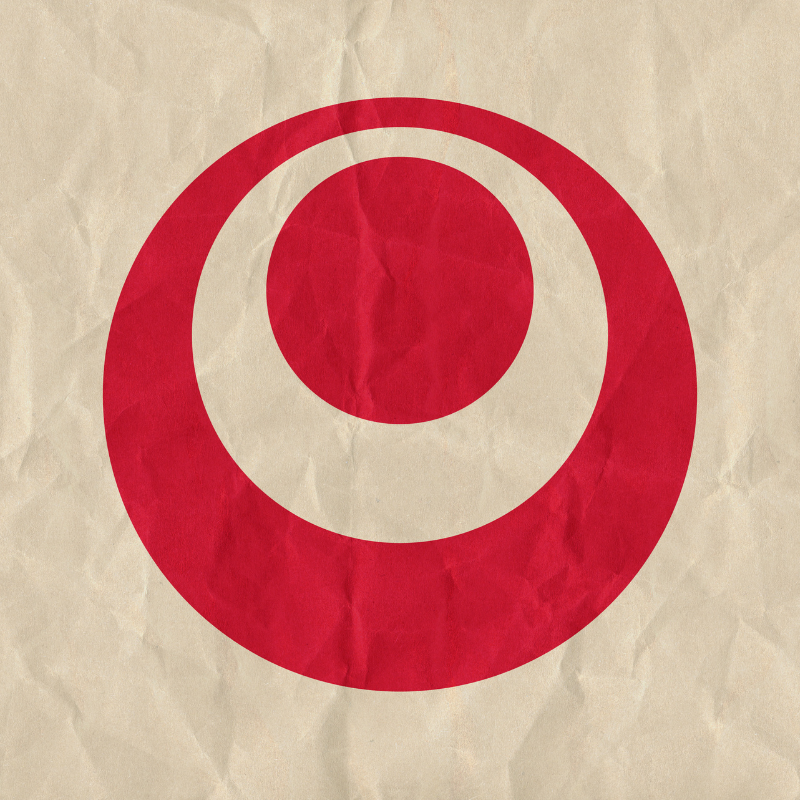AKANA titles and Ranks
AMERICAN KARATE ACADEMIES NATIONAL ASSOCIATION
AKANA is committed to providing martial art schools and Karateka across the United States with an organization that secures their martial arts lineage with the pioneer of American Karate, Hanshi Jerry Piddington, founder of the first American Style of Karate, called American Open Style, under the USKA sanctified charter established by O’Sensei Robert Trias, Father of American Karate. Our goal is to provide martial art schools and individuals of any style with an opportunity to become affiliated with a martial arts organization that provides access to promotions, teaching credentials, honored titles, and proclamation of styles endorsed and signed by Grandmaster Jerry C. Piddington.
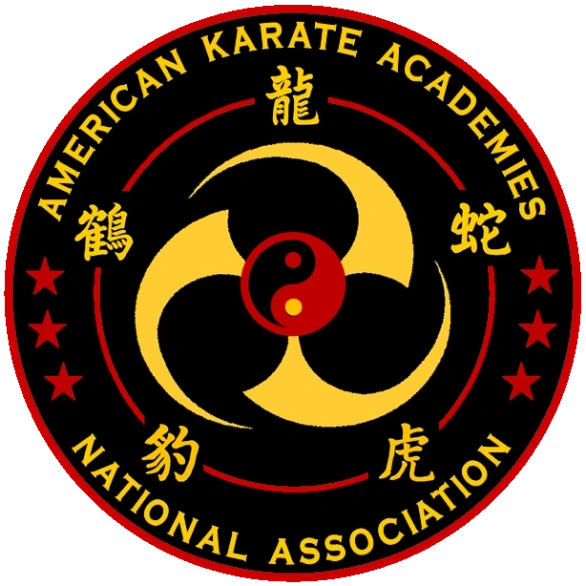
AKANA Patches/Titles
Meanings of Patch Symbols, Titles, and Ranks
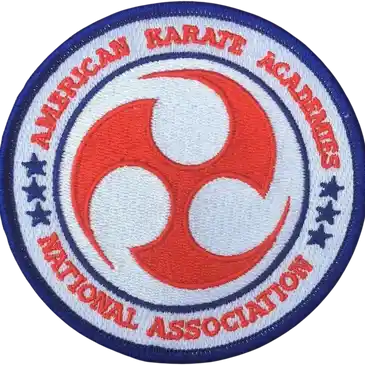
Beginner Mudansha Member
Kohai
JUNIOR STUDENT
First three (under Black Belt) 10th-7th Kyu,
Red tomoe on white background.
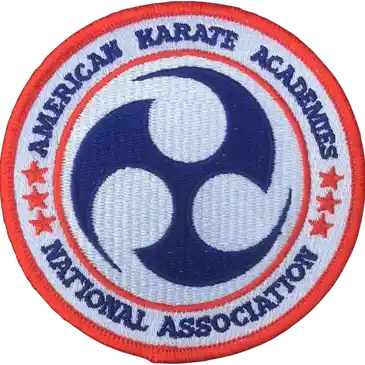
Intermediate Mudansha Member
Kohai
Junior Student
Middle three (under Black Belt) 6th-4th Kyu,
Blue tomoe on white background.
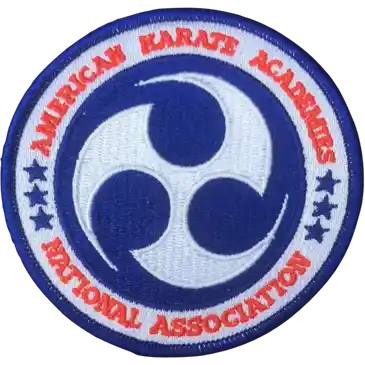
Advance Mudansha Member
Senpai
Senior Student
Last three (under Black Belt) 3rd–1st Kyu,
White tomoe on blue background.
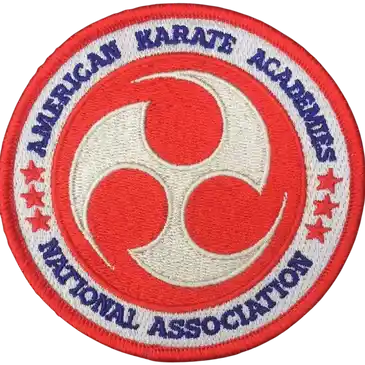
Black Belt Yudansha Member
Senpai
Shodan and up
Black Belts without Teaching Credentials
White tomoe on Red background.
Instructor Patches

INSTRUCTOR
For Instructors who have AKANA Teaching Credentials,
Red-white-blue patch with five animal kanji, blue yin & yang symbol, and red tomoe on white background.
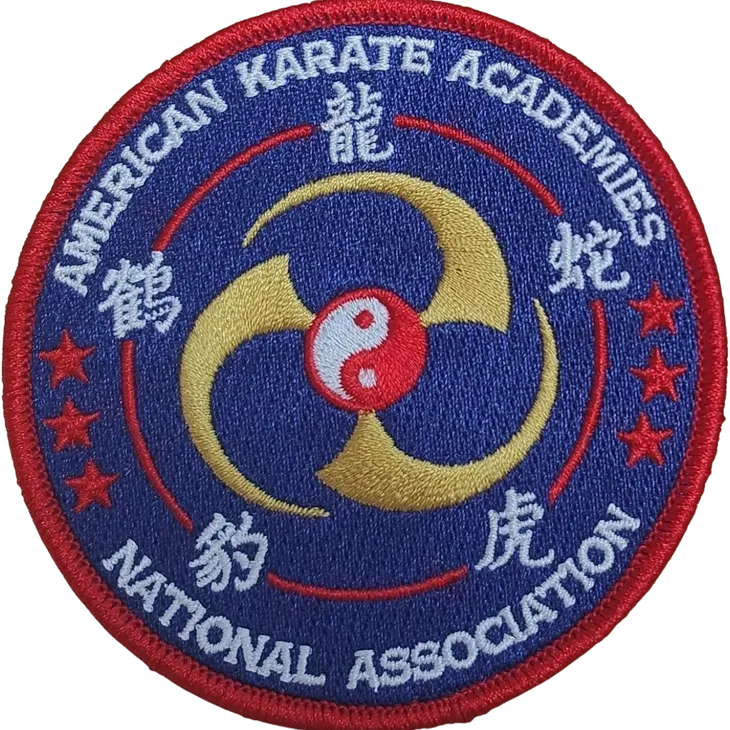
HONORARY INSTRUCTOR
For Honorary Instructors who are approved by AKANA,
Red-white-blue patch with five animal kanji, red yin & yang symbol, and gold tomoe on blue background.
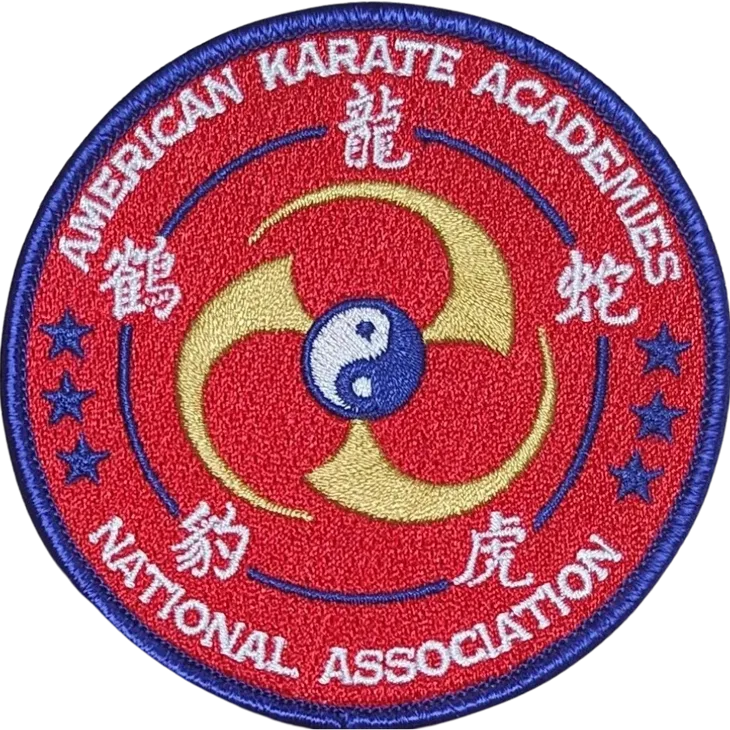
SCHOOL OWNER
For School Owners with an AKANA School Charter,
Red-white-blue patch with five animal kanji, blue yin & yang symbol, and gold tomoe on red background.
Inner Circle Patches
For AKANA Pinnacle Tomoe Holders who help preserve the lineage of true spirited teachers and masters stored and kept for all of time

Head of Style
For AKANA members who are committed for life, Kyoshi Honored Title or higher,
Headmaster of System of Study with a Proclamation,
Red-black-gold embroidery with five animal kanji, red yin & yang symbol, and a gold tomoe on black background.
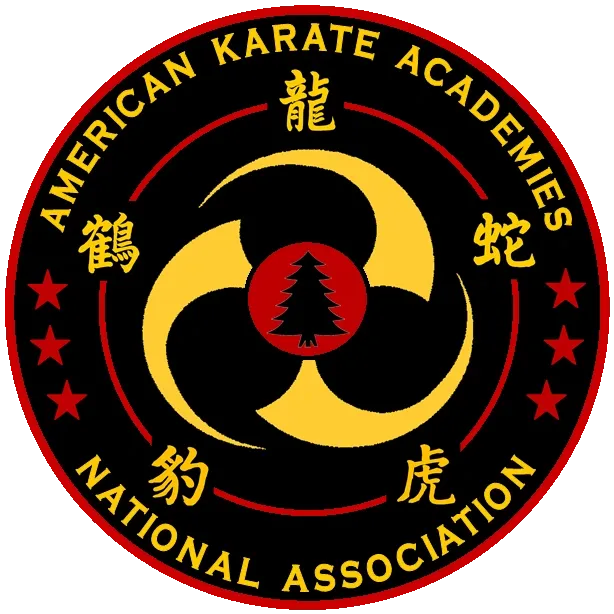
Board of Directors
For AKANA Board of Directors, this innermost circle includes
East Coast Director, West Coast Director, Special Events and Historian Director,
Red-black-gold patch with five animal kanji, red pine tree symbol and gold tomoe on black background.
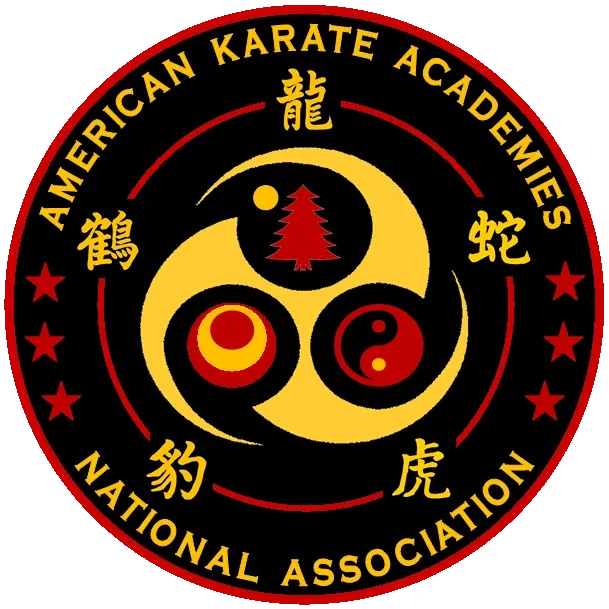
Head of Organization
10th Dan Hanshi,
Highest advisor to the AKANA organization,
Red-black-gold patch with five animal kanji, pine tree symbol on red sun, red Okinawan flag, red yin & yang symbol, and gold tomoe on black background.
TITLES AND RANKS
Japanese – Korean Martial Arts Titles & Rank used in AKANA:
Many times, martial artists believe that titles go with rank. This is not necessarily true. Here are the meanings and typical Title and Rank comparisons. We will use a ten Kyu (under Black Belt) system and a ten Dan (Black Belt) System.
Kohai / Hu Bae Nim
Junior Student
First seven (under Black Belt) ranks. Incorporates both Novice and Intermediate levels.
Senpai / Sun Bae Nim
Senior Student
Last three (under Black Belt) ranks & any Black Belt without an Instructor Certification.
Sensei / Kil Bum Nim
One Who Came Before
Typically, starts at 2nd Degree Black Belt or higher, and must complete an Instructor Certification.
Shihan / Sah Bum Nim
Teacher by Example
Typically, starts at 5th Degree Black Belt or higher, must complete Instructor Certification, does not have to have their own martial arts school, if they do not own their own martial arts school, they cannot be the highest rank within the school.
Tashi / Kyo Sa Nim
Apprentice Expert Teacher
Typically, a 4th Degree Black Belt or higher, must operate a martial arts school and must be a School Charter Member, but is branched off of another Chartered School under a higher-ranking Instructor.
Renshi / Sah Boo Nim
Polished Teacher
Typically, a 5th Degree Black Belt or higher, must operate their own martial arts school and must be a School Charter Member.
Kyoshi / Chung Sah Nim
Expert Teacher
Typically, a 7th Degree Black Belt or higher, must operate their own martial arts school and must be a School Charter Member.
Hanshi / Kwan Jang Nim
Expert Teacher of Teachers
Typically, a 10th Degree Black Belt who is the Head of the Organization, must operate their own martial arts school and must be a School Charter Member, must be approved by the AKANA Board of Directors.
O’Sensei / O’Shihan / O’Sah Bum Nim
Highly Respected Teacher by Example
Can only be achieved at 10th Degree Black Belt, must be the senior and highest advisor to the organization’s Hanshi/Kwan Jang Nim.
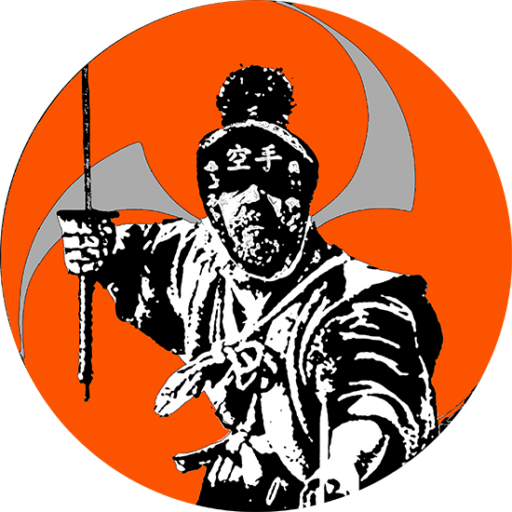
Patch Symbols
Symbols that have distinctive meanings on the AKANA patch:
Three Spheres and Blades
Every association patch displays three open circular spheres and three blades of the Okinawan Tomoe symbol. The three spheres are a reference to mind, body, and spirit flowing together in harmony of motion. Man is three-fold dimensional created in the image of God. The spheres also include three inescapable truths – the existence of birth, life, and death. The three blades represent the continuous or constant motion of technique and the evolution of American Karate which is never-ending.
Three Circles: Outer, Inner, and Full Circle
Every AKANA patch has an outer and inner circle. The outer circle is temporary. The inner circle is forever. The outer circle represents the teachers who work hard to strive toward the inner circle by helping others gain knowledge. Reaching the inner circle is a privilege and honor, for it is where the blessings begin. The innermost circle represents the centuries-long chain of history and faces of the true spirited teachers and masters from Soken Matsumura, Choki Motobu, Tong Gee Hsiang, Robert A. Trias, Tom Crites, and Jerry Piddington, down to the present-day Sensei, for this is where the karateka lineage is stored and kept for all of time. The outer circle also represents external training with external power and energy. The inner circle also represents internal training with internal power and energy. A full circle symbolizes that most techniques are circular in motion. AKANA encourages inner communication among styles and systems fulfilling mutual growth and always returning back to the source, full circle. Keep a beginner’s mind. Never think you know it all. What goes around will come around. You will reap what you sow! Give and you shall receive.
Three Stars on Left/Three Stars on Right
Every AKANA patch displays three stars on the left and three stars on the right for a total of six stars representing those who endured for the sake of others, who fought the hard fight like warriors in a new world and attained greatness, the ones who O’Shihan Piddington will never forget, members of the beginning and original AKANA fighting team – the Charlotte Warhawks: Ricky Smith, Randy Smith, Jimmy Horseley, Danny McCall, Keith Haflick, and trainer, Danny Wilson. The three stars on the left also stand for Grandmasters Robert Trias, John Pachivas, and Jerry Piddington, the original lineage and chartership of American Karate Academies. The three stars on the right also stand for Hanshi Danny McCall, Kyoshi Ricky Smith, and Kyoshi C.J. Mayo, the current Board of Directors and future lineage of American Karate Academies.
Three Colors
Red, white, and blue AKANA patches signify the colors of the American flag representing the freedom it stands for, enabling all karateka in this great country of ours, regardless of their cultural background and beliefs, to unselfishly give and share their martial art principles. Red, Gold, and Black AKANA patches signify the richness of our martial art heritage that represents a rooted and flourishing lineage of karate knowledge.
Maxim of O’Sensei Robert Trias – Karate knowledge is acquired through good health, spiritual and mental perfection, and enjoyment of life to its fullest with devotion to God, country, and fellow man. Karate knowledge shall never be given on the basis of physical performance alone, no matter how excellent the ability. Karate knowledge shall only be given to those whose moral character can thoroughly be trusted.
Five-Animal Kanji
All licensed teachers of AKANA wear a patch with the five-animal kanji representing the original Shaolin Five Animal strengths of karate – tiger, leopard, snake, crane, and dragon. Tiger – bone strength, Leopard – inner and outer strength, Snake – power of speed and deep breathing, Crane – spiritual strength, Dragon – body power and strength. The circle connecting the kanji of these animals represents the combination of these animal techniques flowing together capturing the physical, spiritual, and cultural aspects of the martial arts. Understanding the strengths of each of these animals is a necessary part of understanding the entire concept of the martial art system of self-defense. This kanji also represents the Five Animal Form created by O’Shihan Jerry Piddington, Jake Brown, and Ricky Smith.
Yin and Yang
All licensed teachers of AKANA wear a patch with the yin and yang symbol representing that every action has an opposite and equal reaction. This physical law is an important principle of Karatedo. Examples of yin and yang martial art principles are hard and soft, fast and slow, exhale and inhale, relaxation and tension, pause and move, up and down, in and out, backward and forward, left and right, defensive and offensive, high and low, external and internal, just to name a few. When these opposites work in harmony together, beautiful movements of power and speed are created. This is the art form of Karatedo. The yin and yang symbol also represents the Sun and Moon Form called, Hot like the Sun – Cool like the Moon, created by O’Shihan Jerry Piddington and Karate/Kata champion, Mike Stone.
Pine Tree
All Pinnacle Tomoe Holders wear a patch with the pine tree representing the Okinawan roots of our lineage of styles such as Shorei, Shorin, and Shuri. The pine tree is a symbol of longevity and endurance. The three roots represent mind, body, and spirit. The AKANA Board of Directors patch displays a red sun behind the pine tree. The circle of the sun represents the very innermost circle of Karate Masters who commit their life to preserving the history and generating the growth of AKANA.
